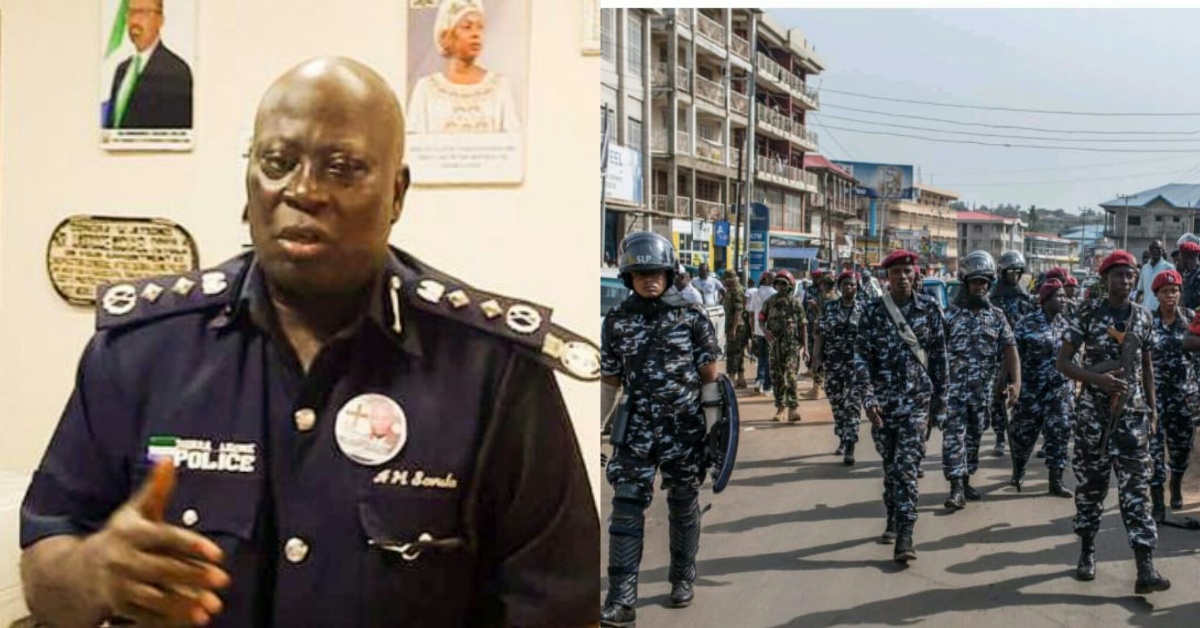I was reading the history of the Operations Support Division (OSD), formerly Special Security Division (SSD) on various websites and I came across this interesting article on why the unit was formed, and who it was meant to protect. If you read through, you will see the pattern of the operations of this very “special” unit and how insecure and nervous past and present leaders turn to the SSD/OSD when they can no longer trust the police and army around them. From 1970 to 2022, the pattern and operation style of the SSD (which many then referred to as Siaka steven’s Dogs) and now the OSD, remain the same and their role was never to protect the people. It is time to disband this terrorist unit in the police. #EndOSD.
Here are excerpts from the piece:
“The Special Security Division (SSD), effectively the paramilitary wing of the Sierra Leone Police (SLP) force, had prospered in almost inverse proportion to the conventional military. The preference given to the SSD, formerly the Internal Security Unit or ISU, was attributable to the personal insecurities of Siaka Stevens.
Once Siaka Stevens became Prime Minister in 1967 and the plans to unseat him failed, he began to rely more on the police than the military to protect him in undertaking his functions. A paramilitary wing was formed inside the police and gradually it became an instrument of tyranny and suppression. This was the start of the drift from [the police’s] traditional peace-keeping constitutional role to that of a fighting force and its subsequent failure to protect the people.
In 1970, to consolidate his power, President Siaka Probyn Stevens created another arm of the Sierra Leone Police Force known as the Internal Security Unit (I.S.U.). The ISU later came to be known as the Special Security Division (SSD) – an armed unit mandated to quell riots and other related disturbances. However, before this time, the Sierra Leone Police Force had been playing a neutral role in the performance of their duties thereby gaining credit from the civil populace.
The intention of establishing a militia was first revealed by Prime Minister Stevens on April 4, 1971, in a public address in Freetown when he intimated that the creation of such a body was necessary because there was not enough money to maintain a large army…
… It was well armed and politically loyal to the APC leadership but poorly disciplined and trained. It was not certain, however, whether operational control of this body was vested in the army or the police.
Politics started creeping into Police functions when Sierra Leone entered into Republican Status.
The predominance of the SSD over the military was a sign that the APC state had concentrated its resources on equipping itself to put down dissent and potential uprising domestically, including that which emanated from inside the Army. This preoccupation with internal security had a naturally debilitating effect on the RSLMF and in particular its readiness for an attack from outside the country.
In 1987, James Bambay Kamara succeeded P.M.Johnson. In December 1991, in a bid to redeem the good image of the Sierra Leone Police Force which had been seriously dented by politics, the British Government sent Mr. Keith Lewis, a retired British Superintendent of Police to restructure the Force. A Series of Police courses were then introduced into the curriculum to enhance the force in policing a modern democratic society.
However, these invaluable training programs for Police were interrupted by the National Provisional Ruling Council (NPRC) Coup of 29th April 1992; during which, the then Inspector-General of Police, James Bambay Kamara, who had increasingly become unpopular, was executed. This political interregnum by the NPRC Junta saw the manipulation of the Police of the Junta. Thus Police were caught in a dilemma; trying to maintain its role to its people and at the same time satisfy the Junta. Police then became a `Force in Crisis`; until the emergence of the democratically elected Government of Dr. Ahmad Tejan Kabbah in 1996.”


 Post a comment
Post a comment








